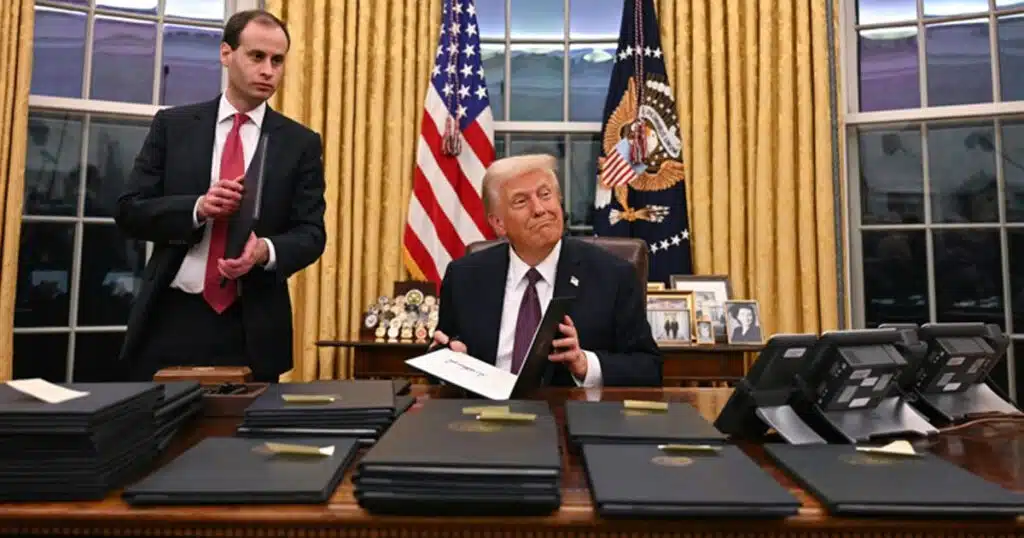
President Trump’s Supreme Court Picks, Executive Orders Continue Realignment with Constitutional Principles
I address two topics today: an important U.S. Supreme Court decision and a Trump Administration directive.
The recent Supreme Court decision appropriately recognizes executive authority (i.e., as exercised by Pres. Trump) under our Constitution and the second involves a directive facilitating religious worship by federal employees.
The Supreme Court ruling highlights the exercise of two major powers of the Chief Executive, President Trump, that are well within his constitutional authority. The first involves the Separation of Powers. The second involves our system of co-federalism and the 10th Amendment right of states to determine for themselves through their state legislatures what kind of law and policy they will live under.
Firstly, the Court held that the Trump Administration may continue to shrink the Department of Education by proceeding with large numbers of layoffs. Trump, with much credibility, has railed against the Department of Education as being bloated, not truly educating children, and advancing Leftist ideas.
Education Secretary Linda McMahon applauded the ruling stating “this lifts the handcuffs off of what we have been trying to do, which really is to get education back to the states where the president believes it does belong.” (Fox News). Secretary McMahon described the Court’s decision as simply allowing her department to carry out its reduction in force (RIF) to improve education for families by returning primary authority over education to the states.
I highlight this decision because, under our Separation of Powers, there should never have been any question that the Chief Executive, i.e., the president, who is the singular head of the entire Executive Branch, has the unquestioned constitutional authority to remove Executive Branch employees. The Trump Administration argued to the Supreme Court that the staffing reductions were meant to streamline the Education Department, not eliminate it (which Congress would have to approve given that the Department was set up by federal law). “The Constitution vests the Executive Branch, not district courts, with the authority to make judgments about how many employees are needed to carry out an agency’s statutory functions,” wrote Solicitor General John Sauer.
Secondly, as it pertains to our system of co-federalism wherein the federal government and the states are co-equal, it is both appropriate and necessary for states to be allowed to decide what sort of public education will exist in their states—not have that dictated to them by bureaucrats in D.C. who likely have little idea what the residents in each of our 50 states seek in public education for their children.
To recap the Court decision, our Separation of Powers, which simply requires our Legislative, Executive and Judicial branches to “remain in their own lanes” requires that our Chief Executive be allowed to layoff Executive Branch federal workers if he chooses. Second, our system of co-federalism and the 10th Amendment also mandate that the states, and their state legislatures, are the most appropriate place to determine law and policy for their own residents.
The second topic I share is a new directive from the Trump Administration allowing federal employees to telework on or before days of religious importance.
The directive requires “federal agencies to consider granting flexible work arrangements, such as work-from-home, for employees who request such an option citing religious reasons. (The Epoch Times, N. Athrappully, 07/17/2025). “Agencies are encouraged to adopt a generous approach to approving religious accommodations, prioritizing employee needs while maintaining operational efficiency,” the memo said. “This guidance is applicable to all employees in the Executive Branch who have personal religious beliefs requiring accommodations, such as abstaining from work during specific times or participating in religious observances or practices.” (Id. at The Epoch Times).
This directive does not surprise me. While President Trump has made clear the error of allowing federal employees to work from home for years on end, the fact that he is trying to accommodate the religious free exercise of federal employees where it can be accommodated indicates that he values and cherishes—and recognizes that federal employees value and cherish—their faith and spiritual life.
I consider both this Supreme Court ruling reaffirming the authority of the President and the Executive Branch over federal employees, as well as the President’s effort to accommodate the religious worship of those same federal employees, are not only right on the merits and legally symmetrical but are also more broadly essential to restoring and realigning our Republic to its constitutional framework, reestablishing a “Government by the Consent of the Governed. “



